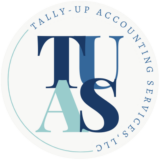A year ago, businesses were faced with the challenge of staying in business and operating under COVID-19 quarantine guidelines. Today, businesses are facing the challenge of staying open due to an employee shortage. A lot has changed in the past year, but one thing remains the same – businesses need to be as creative as possible in this ever-changing business landscape.
Just over a year ago, businesses were having to rethink how to do business in a time of a global pandemic and quarantine. Businesses that did not have online ordering quickly established e-commerce sites, other businesses expanded to patio and outdoor dining, and curbside delivery became the norm. The word “zoom” became synonymous with “meeting.” The business landscape shifted quickly. Businesses that were able to pivot quickly managed to survive, some even thrived.
Now that the world is getting vaccinated and the COVID-19 cases are dropping, many are hoping or expecting a return to “normal.” The problem is, we will not see the “normal” we once knew. The effects of 2020 will be long-reaching and businesses will need to be ever-vigilant of changes needs.
COVID Phase II
Just recently, a client referred to the beginning of the pandemic as COVID Phase I: How to Stay Open and 2021 as COVID Phase II: How to Hire to Stay Open. We’ve all seen the headlines about labor shortages, prospects ghosting interviews, and businesses struggling to stay open due to lack of employees. While some may think that enhanced unemployment is driving the issue, that is not a complete picture. Many people used their time in quarantine to rethink their careers and their personal priorities. Some have pursued educational opportunities for a career change while others have completely dropped out of the workforce due to family issues. Whatever the reason, the shift has happened and if you are thinking things will get back to “normal” in September when enhanced unemployment ends, you may be in for a nasty surprise.
What to do?
Just as there is no one reason for this employment shortage, there is no one answer to solve it. But if there is one big lesson that we learned from COVID Phase I, it is that we, as business owners, need to be creative and be ready to pivot.
As an accountant (and business owner), my perspective leans towards the financial side. As you think through your employment issues, ask yourself the following questions:
What will it cost me to stay open for the next few months?
The workforce mentality has changed, and our hiring behaviors need to follow. With all that is in flux right now, try thinking in short-term strategy boosts rather than long-term. Creativity is key in shifting the hiring paradigm. Consider the following questions:
- What changes do you need to make to your recruitment budget?
- Does it make sense to hire less experienced people and invest more in training?
- Can I allocate money for new employee incentives, like referral bonuses, hiring bonuses or 90-day incentives?
- What are the current competitive wages, and can I afford to increase what I offer?
- Are there benefits that are not valued by employees that I can trim to offset increase in wages?
- Is it feasible to hire contractors or temps for positions that can’t be filled with full-time employees?
Another element to consider is the potential unemployment fraud. Are you allocating sufficient resources to verify unemployment claims?
What can I do to retain my current employees?
Current employees that are trying to manage the workload of several people are in danger of getting burnt out and leaving, especially with so many job openings now. Keeping your current employees happy is important and often less costly than hiring and training new employees. Ask yourself the following:
- Do you have an active employee retention program?
- What are you doing to show employee appreciation?
- What are your employee needs right now? Flexible schedule? Remote work? How many of their needs can you realistically accommodate?
As we work to manage through COVID Phase II, let’s remember that the big lesson of COVID Phase I was to be flexible and to be ready to pivot as needed. The workplace landscape has changed and will likely not return to what it once was. Another thing we learned from COVID Phase I is how our community can really come together to support one another. Let’s keep that going.

